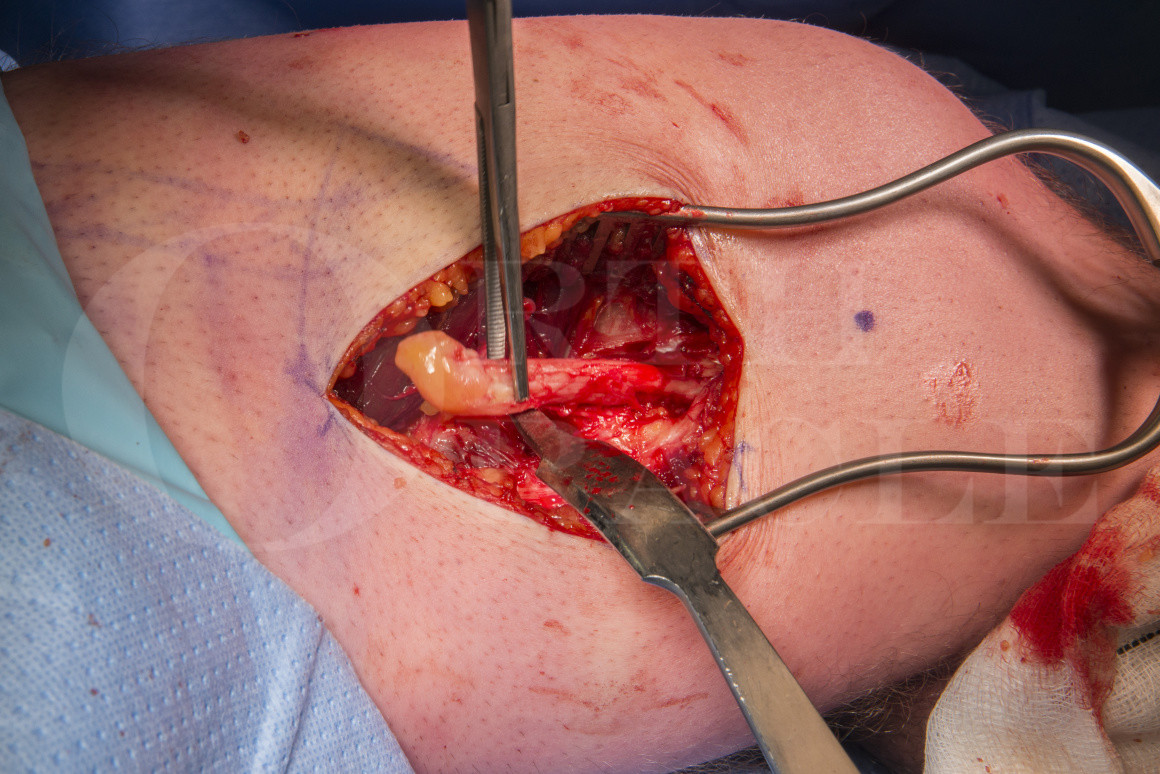Osteochondroma of the distal femur: Excision
Overview

Subscribe to get full access to this operation and the extensive Bone & Soft Tissue Tumour Surgery Atlas.
Learn the Osteochondroma of the distal femur: Excision surgical technique with step by step instructions on OrthOracle. Our e-learning platform contains high resolution images and a certified CME of the Osteochondroma of the distal femur: Excision surgical procedure.
Osteochondromas represent approximately 1/3 of all benign bone tumours. They are an exostosis of bone that is covered by cartilage on its external surface. They typically present in the second or third decades of life and most frequently effect the appendicular skeleton, with the lower limbs more commonly effected. They may be solitary or multiple hereditary osteochondromatosis. The risk of sarcomatous change is rare, seen in approximately 1% of solitary osteochondromas, with rates of 1-25% seen in multiple hereditary osteochrondromatosis.
Surgery for benign osteochondromas should be avoided and only performed if they cause pain, decreased range of motion, pressure on neurovascular structures, tendon irritation or significant bursal formation.
In this case a young male patient had pain and limitation of deep flexion, which was interfering with his active job. Previously he had suffered a fracture of the stalk of the osteochondroma. A period of conservative management had been tried prior to offering excision. An MRI pre-operatively confirmed there was no suggestion of malignant transformation.
Author: Mr Richard Baker MD, MSc, MB.ChB, FRCS (Tr & Orth).
Institution: The Avon Orthopaedic Centre, Bristol, UK.
Clinicians should seek clarification on whether any implant demonstrated is licensed for use in their own country.
In the USA contact: fda.gov
In the UK contact: gov.uk
In the EU contact: ema.europa.eu
Online learning is only available to subscribers.



















